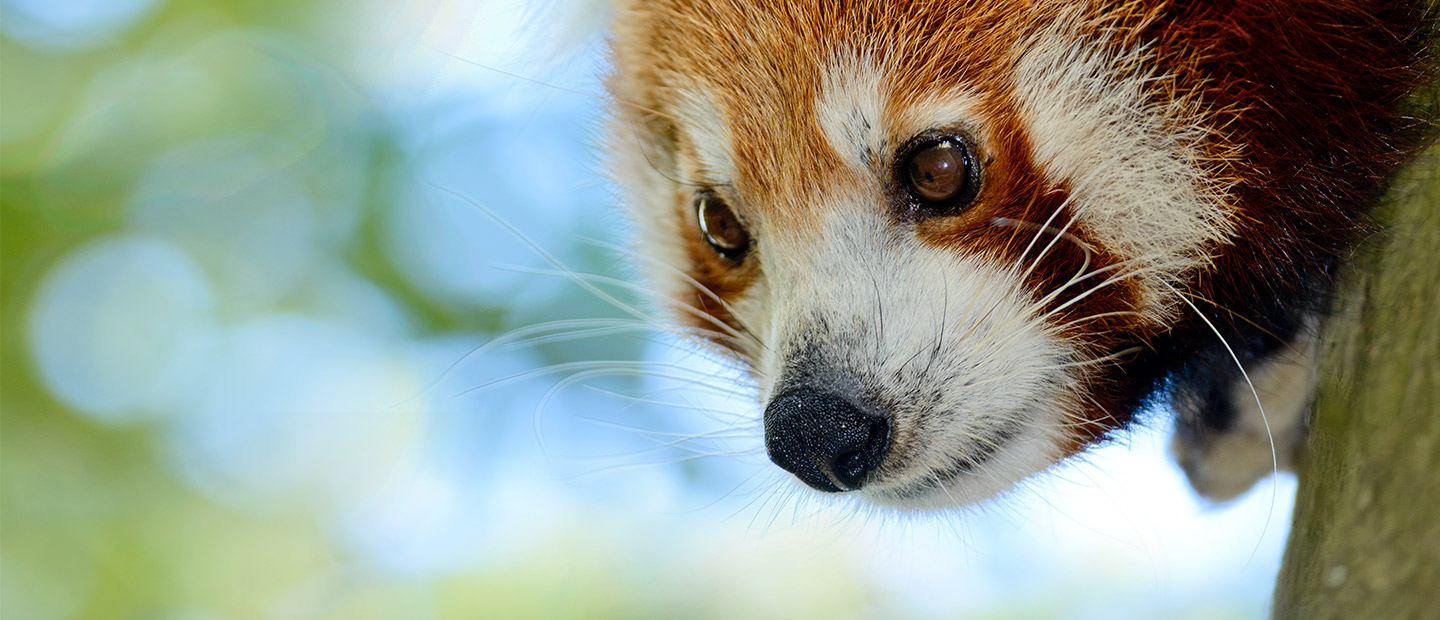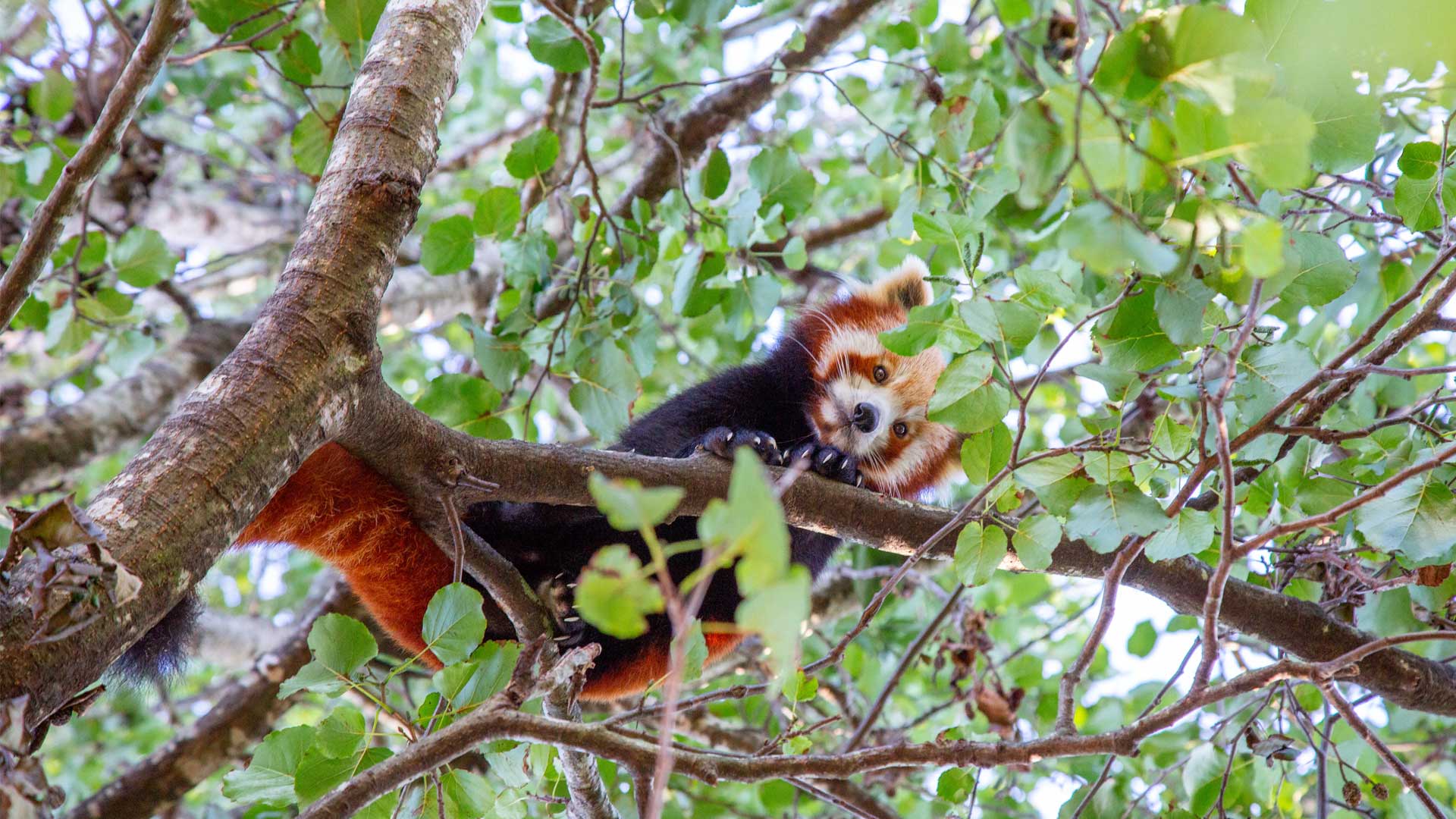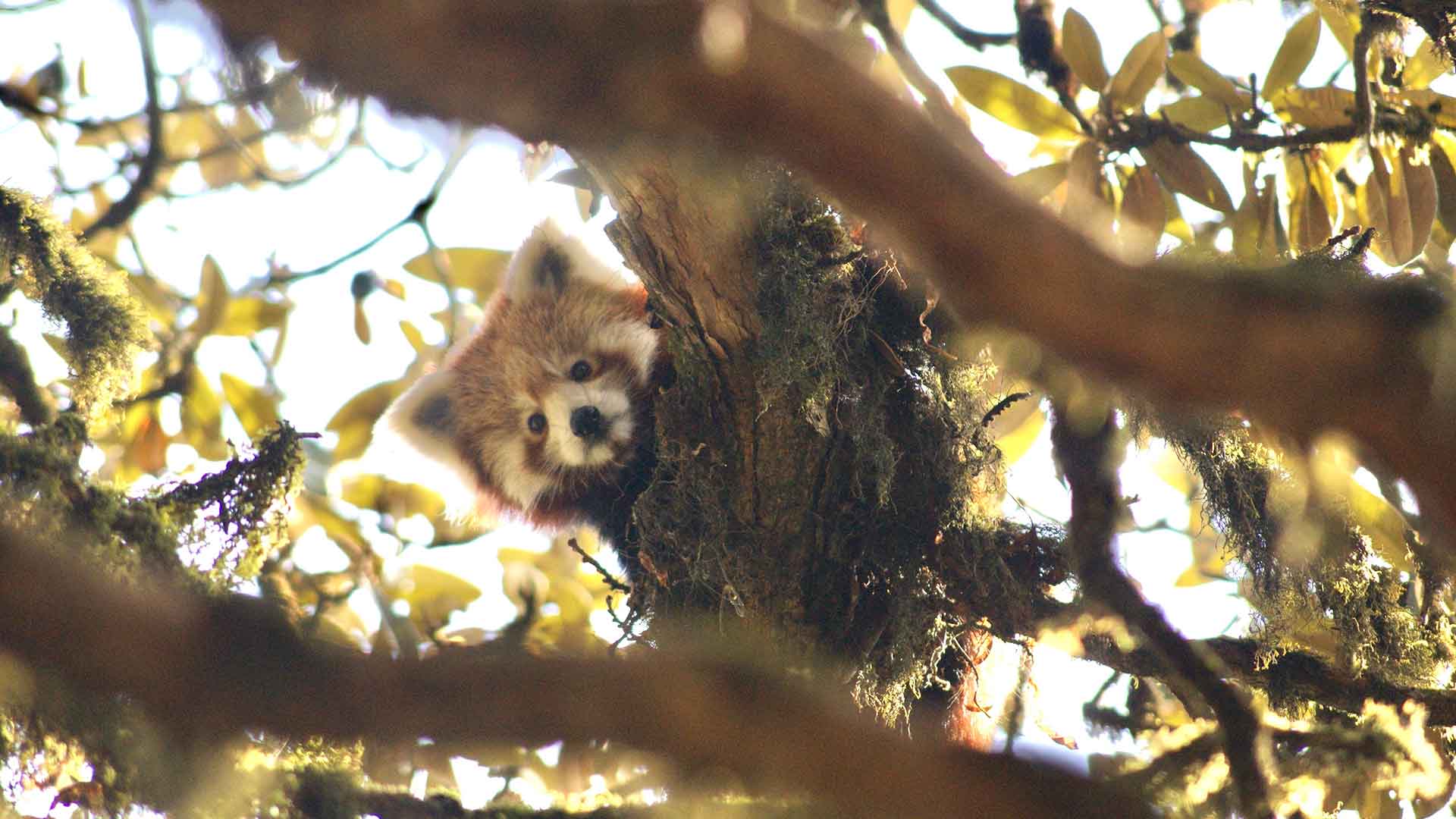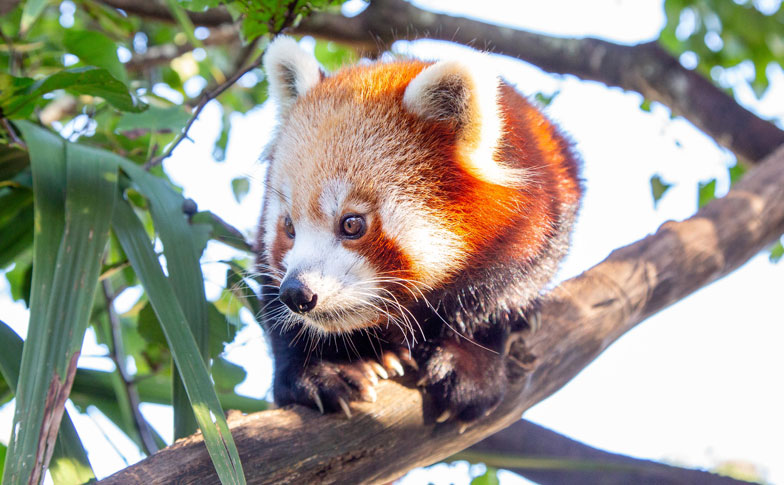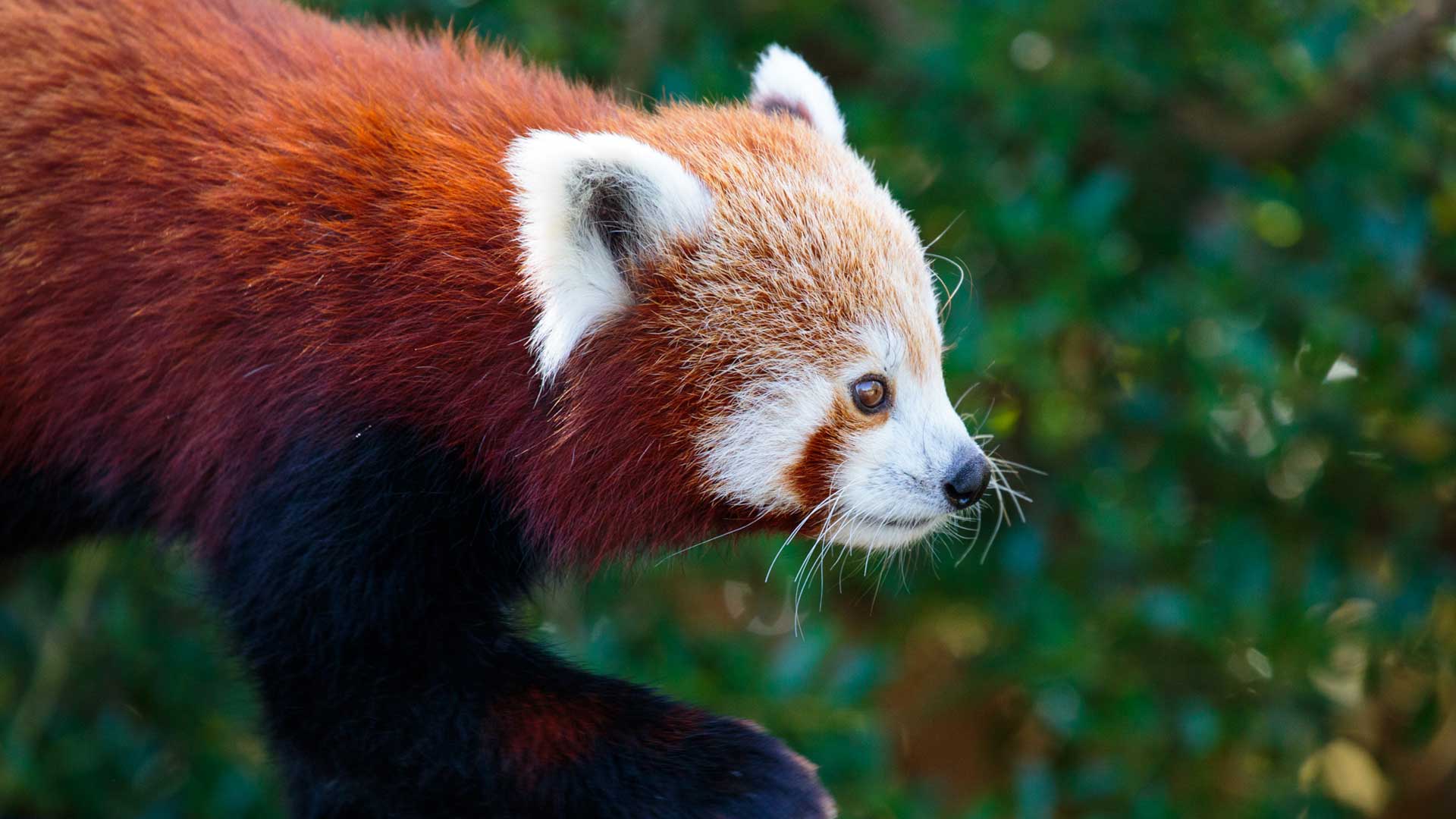Even though red panda mostly eat bamboo, they are classed as a carnivore! How? If you thought a carnivore was an animal that normally eats meat, you’re right. But the classification has a little to do with their digestive track. A red panda’s tummy is designed to eat meat! They obviously didn’t get the memo! As their tummy cannot digest the cellulose in bamboo, in the wild, red panda have to eat 20-30% of their body weight in bamboo every day! That means they have to spend 10 -12 hours a day eating!
Although the red panda may not be designed to eat bamboo, they do have some special adaptations to survive in their natural habitat. The soles of their feet are furry – like built-in snow boots – to stop their feet getting cold! The fur also helps give them grip when walking on slippery branches.
Speaking of keeping warm, red panda have double thick, fuzzy hair – talk about the best winter coat! It is in the best colour too. The red colour helps with camouflage as it is the same colour as the moss covered trees they live in. Their long tail, which is nearly the same length as their body, helps with balance but also can be used like a blanket over their face when sleeping to keep them warm.


